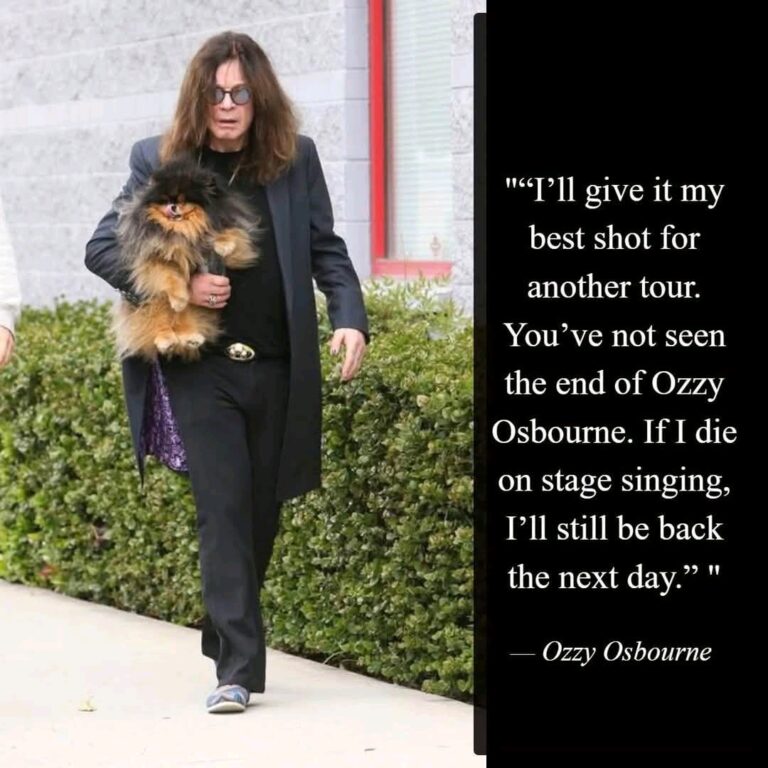Ozzy Osbourne’s Unbreakable Spirit: The Prince of Darkness Roars Again…
Ozzy Osbourne has never been one to follow the rules—or surrender to fate. Through the wreckage of rock ’n’ roll excess, the heartache of personal battles, and the slow march of time, the “Prince of Darkness” has emerged not only alive but burning with defiant fire. His resilience is the stuff of legend, and in 2025, that legend continues to grow.
After decades of dizzying highs and near-catastrophic lows, Ozzy still refuses to bow out. “I owe it to the fans,” he recently declared. “Music is who I am. Until my body truly says otherwise, I’ll keep going.” For many artists, a statement like that might be hyperbole—but for Ozzy, it’s gospel. Time and time again, he has proven that passion, grit, and sheer love for performing can overcome even the cruelest twists of fate.
The past few years have tested him severely. With serious health scares—including neck surgery, a Parkinson’s diagnosis, and mobility challenges—many assumed he would quietly retreat from the spotlight. But not Ozzy. He’s the man who bit the head off a bat and pioneered the sound of a genre; silence was never an option.
Instead, fans witnessed the impossible: comeback after comeback. Whether it was a surprise performance with Black Sabbath, a solo return to the stage at Ozzfest, or guest features that captured his enduring vocal fire, Ozzy has reminded the world he’s not finished yet. Every time he steps up to the mic—frail frame, thick eyeliner, arms raised like a gothic preacher—the crowd erupts not just in awe, but in deep, emotional respect.
Beyond his music, Ozzy’s influence reaches into pop culture history. His groundbreaking reality TV series The Osbournes helped define early 2000s television, presenting the metal icon as a chaotic, loveable father trying to navigate domestic life with hilarious confusion. Meanwhile, Ozzfest—a traveling festival showcasing heavy metal and hard rock—paved the way for younger artists and became a vital platform for the genre’s evolution.
From the haunting vocals of “War Pigs” to the anthemic energy of “Crazy Train,” Ozzy has done more than sing—he’s shaped the sound, aesthetic, and mythology of heavy metal. Artists from Slipknot to Metallica, from Marilyn Manson to Post Malone, cite him as an icon. He’s a living bridge between generations, connecting the rebellious spirit of the ’70s to the darker pulse of modern rock.
Today, fans around the world feel a renewed thrill. Whispers of new material, another tour, and perhaps one last massive Ozzfest spark speculation and hope. His mere presence brings comfort, like a metal beacon refusing to dim. Ozzy isn’t just surviving—he’s still redefining what it means to be a rock legend in real time.
In an age when artists come and go like fads, Ozzy Osbourne stands alone: cracked but never broken, scarred but still screaming. The Prince of Darkness may walk slower now—but his shadow looms larger than ever.
